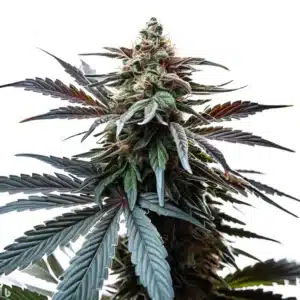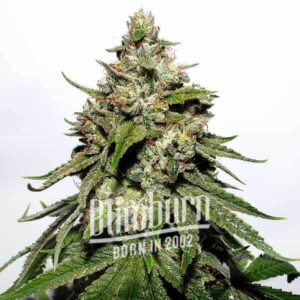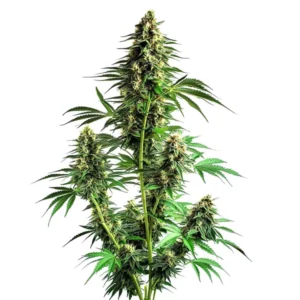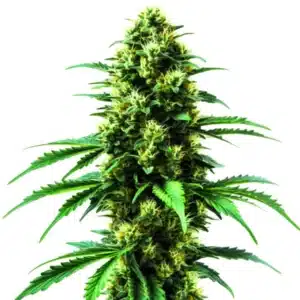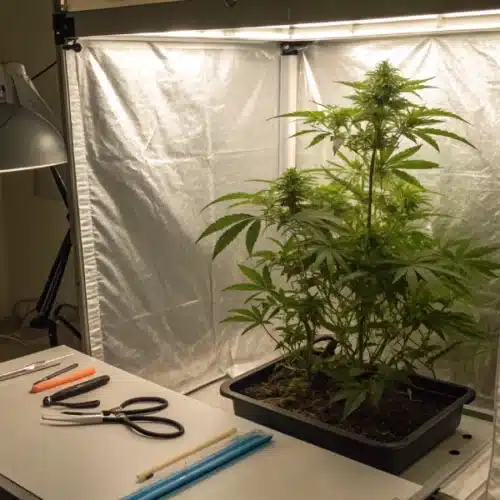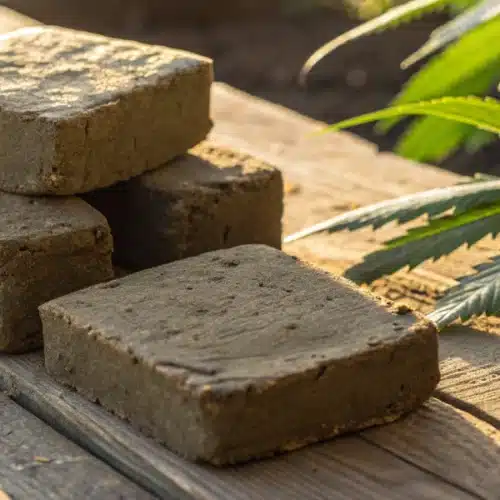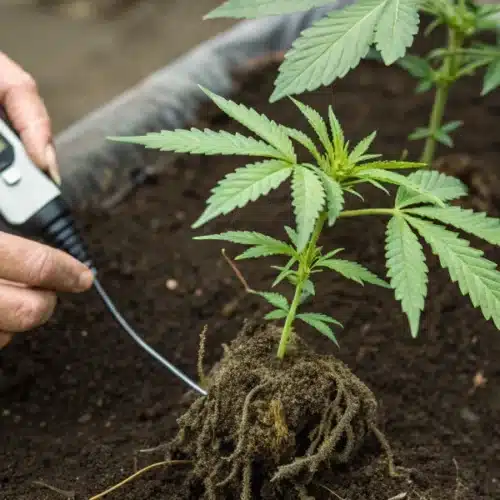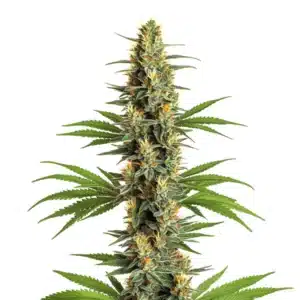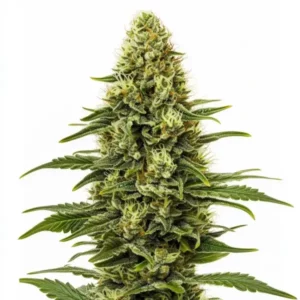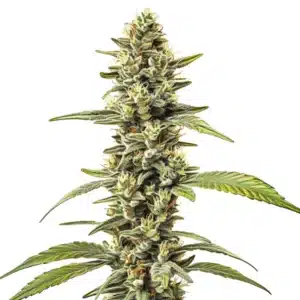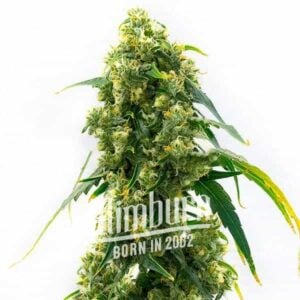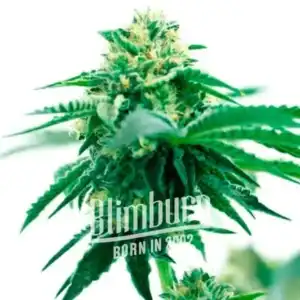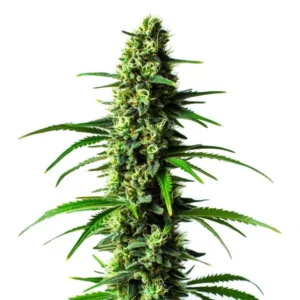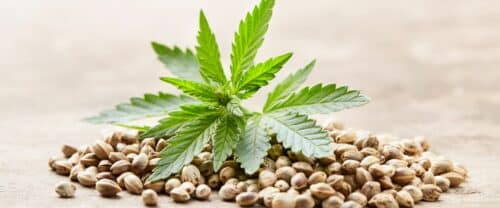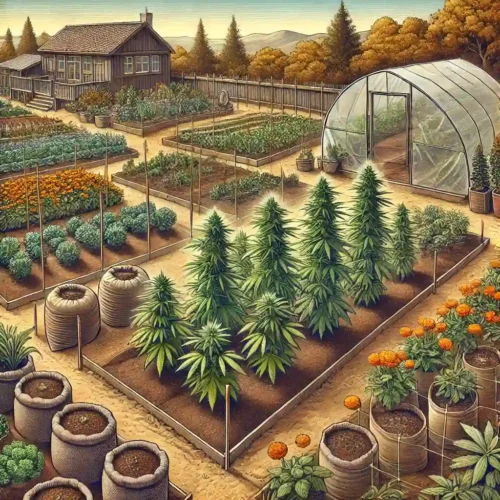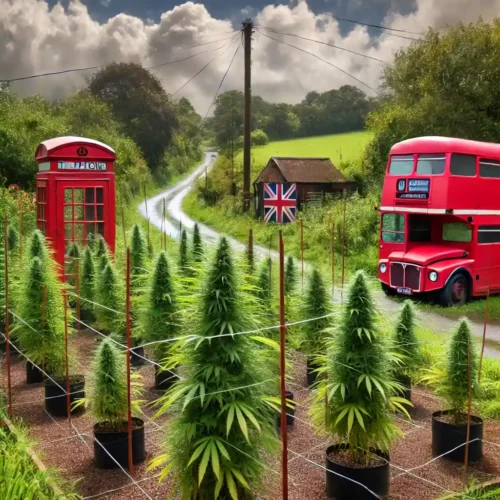At the beginning of winter in mid-December in much of the USA, it is impossible to grow outdoors because the snow arrives in abundant quantities and the torrential rains destroy your crop. For this reason, careful control of outside temperatures is necessary and each gardener should move plants indoors overnight if temperatures drop too low for best results. In the event that you want to take your crop from outside to inside during the winter, you must work to have the optimal growing environment so that the plants will continue to make good progress.
Recommended Strains
Santa Muerte
 THC: 18 - 20%
THC: 18 - 20% Type of seed: Feminized
Type of seed: Feminized Phenotype: Mostly Sativa
Phenotype: Mostly Sativa Day to flower: 10 - 12 weeks
Day to flower: 10 - 12 weeks
Santa Muerte FBV
 THC: 17 - 20%
THC: 17 - 20% Type of seed: Fast Flowering
Type of seed: Fast Flowering Phenotype: Mostly Sativa
Phenotype: Mostly Sativa Day to flower: 8 - 10 weeks
Day to flower: 8 - 10 weeks
Weather permitting, you can expect outdoor plants to reach maturity during late fall or early winter, then indoors to begin the flowering process. If you force the flowering before the plants reach their absolute maturity, you can generate plants that have not achieved 100% development. However, this is the best technique that you can use to keep your crop safe and sound.
The main advice for growing outdoors in winter
Although its natural cycle is to grow between spring and fall, it is possible to grow cannabis in winter. To be able to carry it out with guarantees of success, it is only necessary to be in a warm region where temperatures are not too low during winter. Cannabis grows quite well as long as it gets plenty of sun and the daytime temperature stays between 59-68F (15-20ºC) most days and doesn’t normally drop below 50F (10ºC) at night.
In colder places, it is necessary to keep the plants inside a greenhouse. A good solution is to grow in a glazed terrace with a lot of sun which is a kind of urban greenhouse. The main advantage of this system is that the plants benefit from the warm temperatures that usually exist inside the houses during the winter. The biggest advantage of growing in winter is that there are almost no bugs, so the risk of pests is minimal. The thieves and the police are not looking for plants in winter either, so the grower can live more calmly.
Naturally, when grown in winter, there are some disadvantages. The cold and the few hours of sun make it difficult for the plants to develop. In December and January, the photoperiod is very short, barely nine or ten hours of light a day, which is also much less intense than in summer. This photoperiod can be used for flowering but it is too short for the plants to grow. If seeds are sown under a winter photoperiod, the plants will start to flower right away before they get big enough, so production will be minimal.
Promos & Deals
Extend daylight hours and do mixed crops
To achieve larger plants and higher yields, it is necessary to alter the photoperiod to prevent flowering until they have reached a sufficient size. There are several techniques to keep plants growing when the natural photoperiod is very short. The two most common are:
1- Extend the natural photoperiod. In this system, we combine daylight hours with several extra hours of artificial light, usually before sunrise or after sunset to reduce the length of nights.
2- Combine indoor and outdoor cultivation. This mixed system consists of keeping the plants indoors during the growth phase and taking them outside to flourish. Indoors, they are germinated and grown under lamps with a photoperiod of 18/6 which produces a great and fast development. When the plants reach the desired size, they are taken outdoors (or into a greenhouse) to flower under the natural photoperiod.
In addition, the plants are indoors in December and January which are the coldest months and they are taken out in February or even in March when the temperature is somewhat higher. In mixed indoor-outdoor cultivation, the final size of the plant will depend on what it will be when we take it outside. Therefore, if we want them to grow big, we must let them grow a lot indoors before putting them outside.
Beware of fungi and very low temperatures
Winter plants are usually weaker and the greater existing humidity can favor the appearance of fungi and molds, so care must be taken to extreme. If there is frost or temperatures close to zero degrees, the plants will not survive and if they do, they will grow very slowly. Whenever possible, it is advisable to put the plants under a cover on days when frost or storms threaten. If the plants are planted in the ground, it is not easy to give them heat. On the other hand, if they grow in pots, it is possible to insulate them from the cold in various ways.
First, they can raise the pots off the ground by placing them on a piece of wood or, better yet, cork. The wood and cork prevent the pot from getting too cold when in contact with the ground. Second, it is advisable to use black pots because they better absorb the heat of the sun. In some grow shops, you can find porexpan pots that use white cork in packaging. These pots are insulating and help keep the roots warm in cold weather. If the cannabis roots are warm, the plant can handle the cold quite well on the branches and leaves.

Growing in greenhouses in winter
We have already said in this guide that growing in a greenhouse in winter, especially if you have plants in mother soil or plants of mutant size, is the best. But now, we are going to tell you why a greenhouse is the best place for outdoor cultivation during winter. In a greenhouse, the temperature rises a lot during the day when the sun heats it up, however, at night, it will hardly get more than four or five degrees higher than outside. So, to grow cannabis in a greenhouse in places where temperatures drop a lot at night, it will need to be heated in some way. It can be heated with a butane stove which will also add CO2 to the environment, something very positive for the plants. Butane is effective but expensive and a canister will not last more than a week or two.
Another method is to make a wood stove with an iron drum and some chimney tubes which will expel the smoke outside after having traveled the entire length of the greenhouse. If well constructed so that the shaft can be closed and the firewood burns slowly, it can be one of the most practical and cheapest systems, provided the grower can get the firewood at a good price or collect it himself from the forest.
Ruderalis genetics, the most important for outdoor cultivation in winter
We want to clarify that ruderalis genetics are the most important when growing outdoors during winter because, first of all, it is the essential piece for creating autoflowering plants by hybridizing it with any variety. On the other hand, ruderalis genetics are also essential for the creation of Fast Version weed varieties. This plant is believed to be native to Russia, Central Asia, and Central Europe where extreme temperatures with very cold winters and short but bright summers have made this cannabis the hardiest of the three species.
In addition, the inclement weather in these areas has caused ruderalis to have a really short life cycle. The fastest specimens can complete it in 10 weeks, although the most common is between 12 and 14 weeks. Ruderalis seeds can stay in the ground all winter, even freezing, and flower with the arrival of summer or light days. In this adaptation process, its autoflowering nature is the most valuable characteristic that this plant has developed.
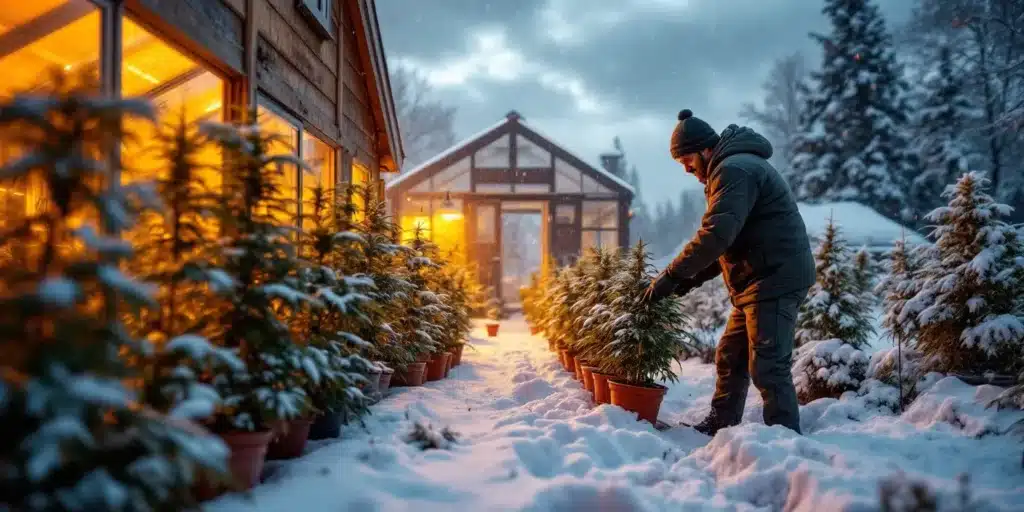
The best cities for outdoor cultivation in winter in USA
1- Los Angeles, California, where daytime temperatures reach 58°F (15°C) and vary from 50-51°F (10-11°C) at night. To the above, you must add that snow has not fallen in this city since 1962, so that should not be a problem.
2- Orlando, Florida is another recommended city for outdoor cultivation in winter because it has temperatures between 62°F (17°C) during the day and the average lows only go down to 51°F (11°C) at night. Snow is not a problem here either, but you have to be careful with ambient humidity. Therefore, it is good to inspect the plants to avoid the appearance of mold.
3- Miami, Florida brings temperatures of 70°F (21°C) in the day and nightly lows that only drop to around 62°F (17°C). This city has high humidity, therefore, it is necessary to protect the plants from fungi such as mold or powdery mildew. Despite that, this city is certainly a great place to grow weed outdoors during the winter.
4- Perhaps from this list, Phoenix, Arizona has temperatures closer to the limit with daily temperature of 58°F (14°C) and nightly lows that reach 46° (8°C). When growing here, you should try to protect your plants in some way outdoors so that the cold does not affect them so much. If you grow in small or medium pots, it is best to move the plants indoors. In the event that you grow in a greenhouse, the best thing to do is to try to give the plants additional heat with some type of heater.
5- We must include Tampa, Florida on this list, a city that has daytime temperatures that climb to 62°F (17°C) and lows around 53°F (12°C) at night. For this reason, the plants can withstand the winter nights in Tampa well.
Santa Muerte Fast Version
First, we must remind you that Santa Muerte Fast Version is the crossing of our original mother Santa Muerte with a Rudelarys genetic that gives it the characteristic of flowering in record time. Santa Muerte Fast Version is a mostly sativa variety that stands out not only for its short flowering time, but also because you can get strong yields of up to 24 oz/plant in outdoor crops in just 50 to 55 days of flowering.
In cold and dry weather, you can grow Santa Muerte Fast Version without many problems. Always make sure that the temperatures do not drop too much and if the humidity increases, be careful and check the flowers daily so that the plant is not attacked by mold that can spoil the harvest. With the cold, plants tend to produce more trichomes on their flowers and leaves. For this reason, you can get more powerful buds with Santa Muerte Fast Version in an outdoor crop during winter. This strain will not disappoint with the production of 17%- 20% THC.
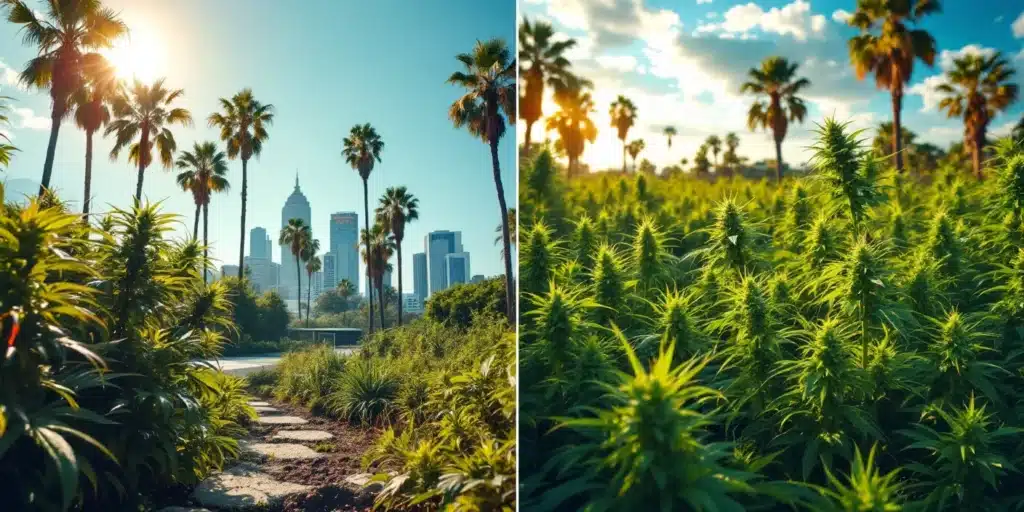
2046 Fast Version
This is another mostly sativa strain called 2046 Fast Version which flowers after a short period of just 8-10 weeks. This makes it an essential weed variety for climates where temperatures can be a bit cooler in winter and have somewhat higher humidity levels. Our 2046 Fast Version is characterized by producing robust buds but with good aeration, allowing air to filter through the buds, branches, and leaves of the plants. Although, it is always good to be vigilant and avoid the appearance of fungi such as powdery mildew.
If winter days are too cloudy for your weed plants, you can stimulate the plant with a few extra hours of light indoors and make a mixed-type crop. If you use a greenhouse, you can install some low-consumption lights inside the greenhouse. The great yields of this variety stand out, reaching 22 oz/plant for outdoor cultivation and THC levels of 20%-26% that will make you hallucinate. Remember that strain, like 2046 Fast Version, is photoperiodic, so it depends on a photoperiod to develop optimally and mature.
Grape Killer Fast Version
To finish these recommendations, we present you with Grape Killer Fast Version. This weed, like the others, is also available in our store and you can buy it now! Grape Killer Fast Version is characterized by its exquisite flavor that is a mixture of sweet flavors with spicy touches and notes of fruit and hashish. It also stands out for its short flowering period which makes it an excellent alternative for winter crops in places with climates that are rather mild.
Its potency is remarkable and it is between 15%-19% THC. This perfect strain will take you on an incredible journey to a state of happiness, making you feel focused, especially on the tasks you have to do during the day. Then, it culminates with a bearable relaxation. On the other hand, you can get up to 21 oz/plant of buds in an outdoor grow in optimal conditions, an amount deserving of applause and bows because it is absolutely remarkable.
Now, you are ready to grow in winter with this guide. Do not forget to follow our growing tips and all the data and information that we give you. Take advantage of our offers and gifts and purchase the genetics that we recommend in this blog so that you can achieve an outdoor winter crop that is worthy of the greatest marijuana gods. See you on the following blog.



